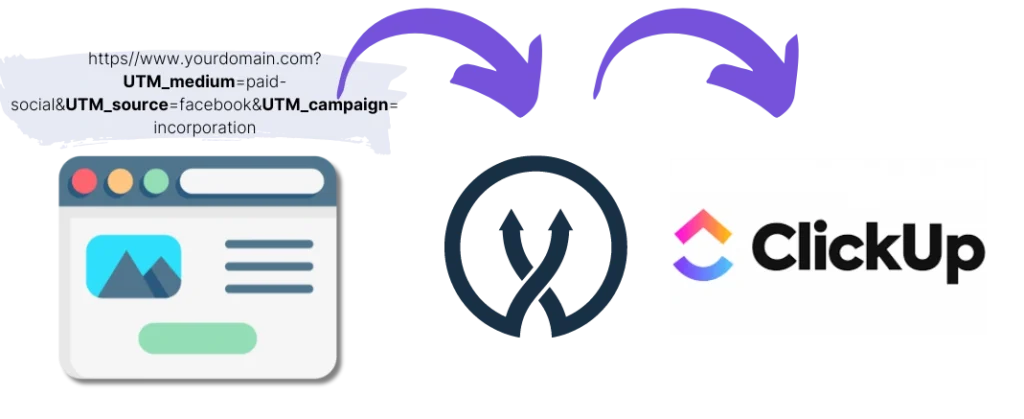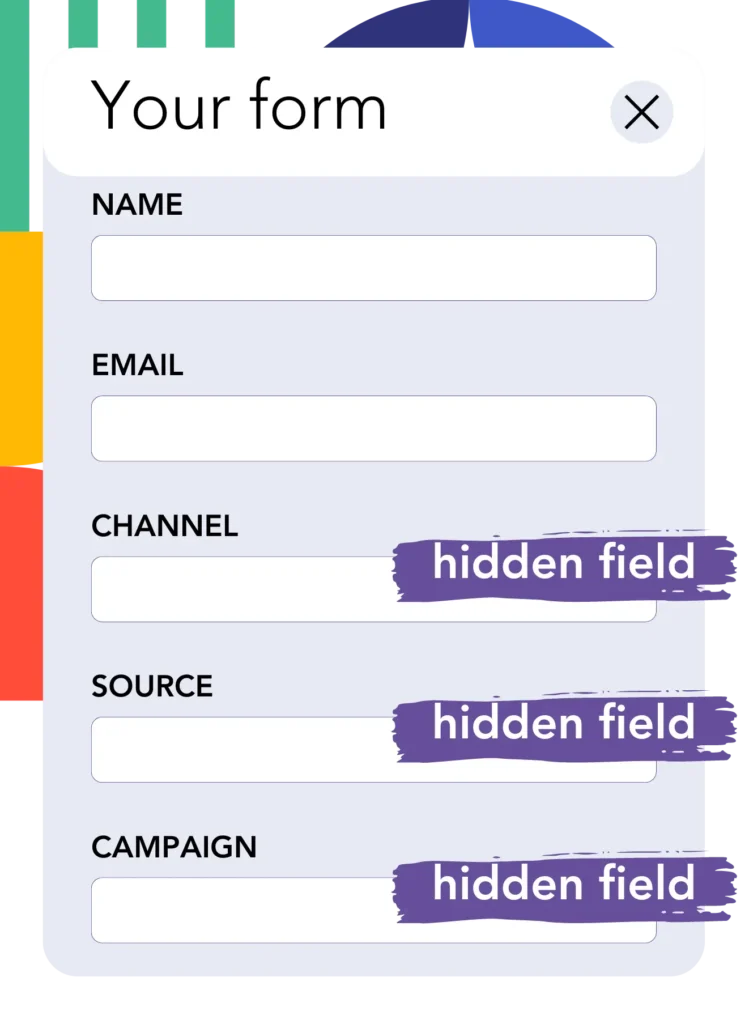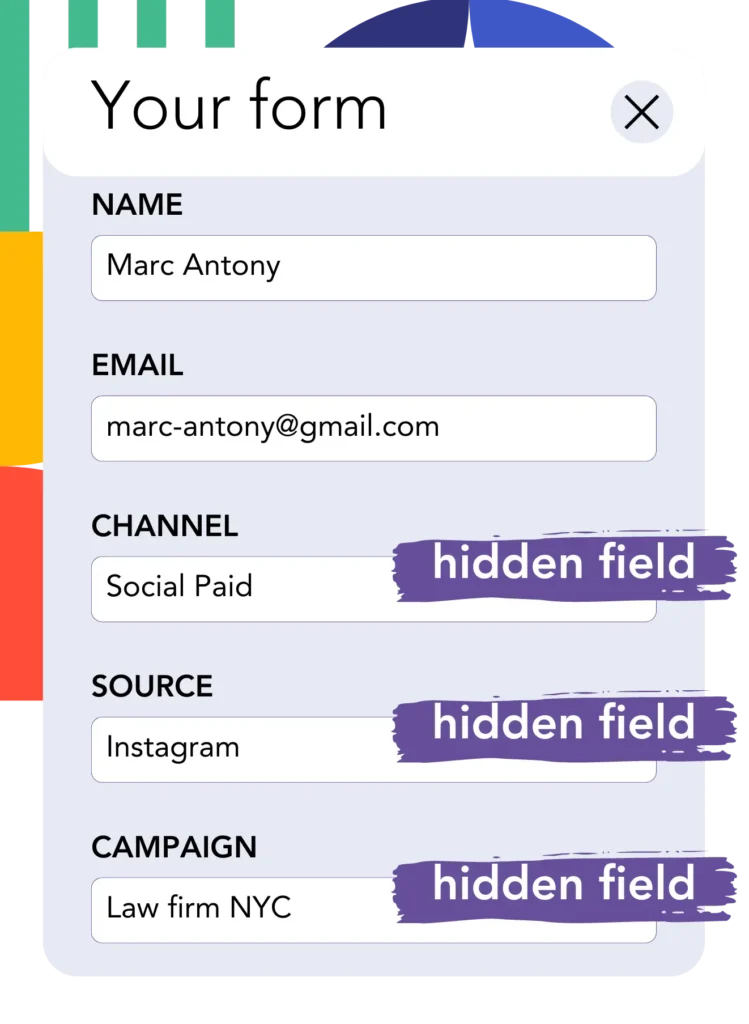Adding UTM tracking to ClickUp Forms can be challenging, especially for those without coding skills.
Imagine a solution that allows you to easily capture UTM parameters into ClickUp Forms, without any need for coding.
Meet Leadsources.io!
Leadsources is a lead source tracking tool that bridges the gap between your UTM parameters and ClickUp Forms.

When a visitor clicks on your marketing campaign, Leadsources captures the UTM parameters in your URL.
Leadsources then automatically inserts these UTM parameters into the hidden fields of your ClickUp Forms.
You can then see your UTM parameters along with the lead’s information on the submission page of ClickUp Forms.
This guide provides a quick and easy way to set up UTM tracking in ClickUp Forms with Leadsources in 10 minutes, with no coding skills necessary.
Implement ClickUp Forms UTM Tracking in 4 Easy Steps
Step 1: Add Leadsources to Your Website

Sign up for Leadsources.io and take advantage of our 14-day free trial.
Add the Leadsources code to the head tag of your website. No coding or developers are required.
Simply follow our step-by-step guide.
Step 2: Add UTM Parameters to Your Campaigns

Include the UTM parameters you want to track in all your campaigns (PPC, email, social media, etc.).
Leadsources works with these UTM parameters:
- UTM_source
- UTM_campaign
- UTM_term
- UTM_content
Leadsources also captures information not contained in UTM parameters, such as the channel, landing page, and landing page subfolder.
Step 3: Add Hidden Fields to Your ClickUp Forms

When visitors fill out your ClickUp Form, they enter personal data in the visible fields (name, email, etc.).
Meanwhile, Leadsources.io automatically inserts the UTM parameters into the hidden fields of your ClickUp Form (channel, source, etc.).
To do this, add the hidden fields in ClickUp Forms that will store your UTM parameters.
Add Hidden Fields:
- In the form editor, look for the option to add fields. This is usually done by clicking on a “+ Add Field” button or similar.
- Add a new field for each UTM parameter you want to track. Ensure these fields are set as hidden fields.
- Add the exact following fields one by one:
- channel
- source
- campaign
- term
- content
- landingpage
- landingpagesubfolder
Step 4: Track the UTM Parameters in ClickUp Forms

When someone clicks on your campaign and lands on your website, Leadsources captures the UTM parameters in your URL.
The visitor opens your ClickUp Form and starts filling it out.
Leadsources inserts the UTM parameters into the hidden fields of your ClickUp Form. These fields are not visible to the visitor.
Upon form submission, the UTM parameters and the form’s responses are submitted together. You can find all this information on the submission page of ClickUp Forms.
How does Leadsources work?
By adding the Leadsources code to the head tag of your website, Leadsources reads and captures the UTM parameters in your URL every time someone lands on your site.
It then stores the UTM parameters in the hidden fields of your ClickUp Forms.
If a visitor enters your site without clicking on a link containing UTM parameters, Leadsources still captures data about the visitor using the referrer, such as:
- Channel
- Source
- Campaign
- Landing page
- Landing page subfolder
In that way, you can track important lead source data even when UTM parameters are not used, such as:
- On Google Search
- On your Instagram bio link
- On your social media posts
While most tools can only track the source of your leads using UTM parameters, Leadsources allows you to track lead sources regardless of where they come from, whether UTM parameters are used or not:
- Organic Search
- Paid Search
- Organic Social
- Paid Social
- Referral
- Affiliate
- Display Advertising
- Direct Traffic
This enables you to collect lead source data in one place.
How to run performance reports
Now that you have captured your lead source data in the hidden fields of your ClickUp Forms, you can use it to run performance reports such as:
- Leads per channel
- Revenue per channel
- Revenue per keyword
This helps you make informed decisions about your marketing spend.
Here’s a review of the different reports you can produce:
Lead performance reports
You can run reports showing the volume of leads generated by:
- Channel
- Source
- Campaign
- Landing page
- Landing page subfolder
Example #1
You run campaigns on different channels (SEO, PPC, emailing, etc.). You can export the collected data and create the report: “Leads by channel.”

Example #2
After identifying which channel drives the most leads (e.g., Google Ads), you can further analyze the number of leads generated for each ad campaign.

Example #3
Once you know which campaign drives most of your leads, you can delve deeper by analyzing the keywords generating the leads for that campaign.

Sales performance report
Knowing which ads and keywords drive the most leads is crucial. But do these ads and keywords contribute to your revenue?
By sending your ClickUp Forms submissions to a CRM, such as GoHighLevel, you can generate similar reports by sales.
Example:
| Channels | Search Paid | Social Paid |
| Leads | 50 | 75 |
| Sales | 5 | 6 |
| Average order value | $150 | $100 |
| Revenue | $750 | $600 |
You ran ads on Google and Facebook, and the the first report indicated that Social Paid ads had higher lead numbers compared to Search Paid ads.
However, after tracking which leads became paying customers, you found that Search Paid ads had a higher revenue return per lead, leading you to adjust your budget in favor of Search Paid ads.
